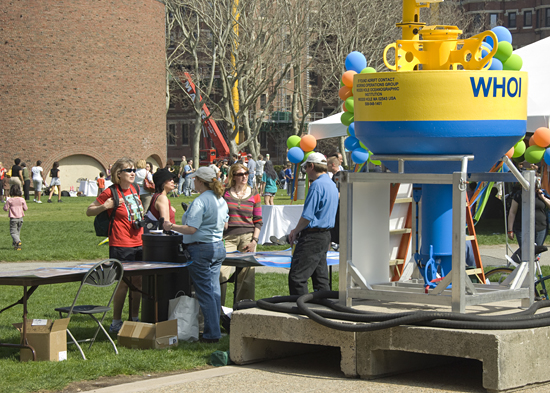So far this is all I’ve been able to find out about the
science of wheelies. I found it in www.fark.com, under wheelie physics. I noted what two contributors said about it,
who I’ve labeled A and B. They were
discussing whether you could do a wheelie while on a treadmill (!).
Rear wheel:
"A" said: The force of
gravity opposes motion of the body of the bike.
Friction reduces motion.
Friction between the wheel and the ground works to prevent the wheel
from moving. You need acceleration to
rear up.
"B" said: It’s not about
acceleration. The rear tire applies a
downward force to the ground, causing an equal and opposite reaction. Meaning, the force of the rear wheel hitting
the ground causes the rest of the bike to rise up from the ground – lift. [like a jump] *
Next, you need to control
the amount of torque** that is applied to the rear: The right amount of torque will result in a
wheelie. Too much torque will result in
a spinout.
There was more discussion, but these were the main things I got from it. - Ed.
* Newton’s 3rd law of motion: Every action has an equal and opposite
reaction.
**Torque: Torque is a
turning force.
THIS JUST IN! May 5 4 P.M.
Wikipedia has a great page on the physics of bicycling, plus the physics of wheelies. So here it is.
Wheelies
In vehicle acrobatics, a wheelie, or wheelstand, is a
vehicle maneuver in which the front wheel or wheels come off the ground due to
sufficient torque being applied to the rear wheel or wheels, or rider motion
relative to the vehicle. Wheelies are usually associated with bicycles and
motorcycles, but can be done with other vehicles such as cars, especially in drag racing
and tractor pulling.
The first wheelie was done in 1890 by trick bicyclist Daniel
J. Canary, shortly after modern bicycles became popular. Wheelies appear in popular culture as early as
1943, as U.S Army motorized cavalry are pictured in Life magazine performing high speed
wheelies. Daredevil Evel
Knievel performed motorcycle acrobatics including wheelies in his shows. Doug "The Wheelie King" Domokos has
accomplished such feats as a 145-mile (233 km) wheelie.
Types of wheelies can be divided into two broad categories:
1. Wheelies in which the vehicle
power is sufficient by itself, as described in the Physics section below.
These include:
·
Clutch wheelies - performed by
disengaging the clutch
and opening the throttle
to let the engine race and then engaging the clutch abruptly.
·
Power wheelies or roll-on wheelies
- performed by simply opening the throttle. If the engine has sufficient power, it will be able to lift the front wheel.
2. Wheelies performed with the aid of
suspension dynamics or rider motion. These include:
·
Bounce wheelies or slap
wheelies - performed by opening and closing the throttle in time with suspension rebounding, tire rebounding, rider
motion, or any combination of the three.
·
Manuals - performed without applying
torque to the rear wheel at all, but instead by moving the rider's body
backwards relative to the bike, and then pulling back on the handlebars near
the end of available travel.
Wheelies are a common stunt in artistic
cycling and freestyle BMX. The bike is balanced by the rider's
weight and sometimes use of the rear brake. A style of bicycle, the wheelie
bike, has a seating position, and thus center of mass, nearly over the rear
wheel that facilitates performing wheelies.
Physics of Wheelies
A wheelie is imminent when the acceleration is sufficient to reduce the load borne by the front axle to zero. The conditions for this can be calculated with an equation which takes into account acceleration due to gravity, the horizontal distance from the rear axle to the center of mass, the vertical distance from the ground to the center of mass, and is summarized:
The minimum
acceleration required is:
directly proportional to how far forward the center of mass is located
and inversely proportional to how high it is located.
Since mechanical
power can be defined as: directly proportional to how far forward the center of mass is located
and inversely proportional to how high it is located.
force times
velocity, in one dimension (Fv), and
Since force is equivalent to mass times
acceleration (F = ma),
Then the
minimum power (Pmin) required for a wheelie can be expressed as
the product
of mass, velocity, and the minimum acceleration required for a wheelie,
which is: 
Thus the minimum power required is directly proportional to the mass of the vehicle and to its velocity. The slower a vehicle is moving, the less power is required to perform a wheelie, and that is without even considering the power required to overcome air drag, which increases with the cube of velocity. Therefore, the least amount of power required is when the vehicle begins accelerating from rest.
